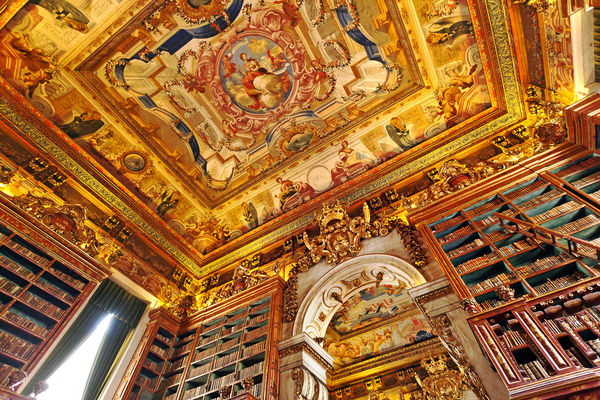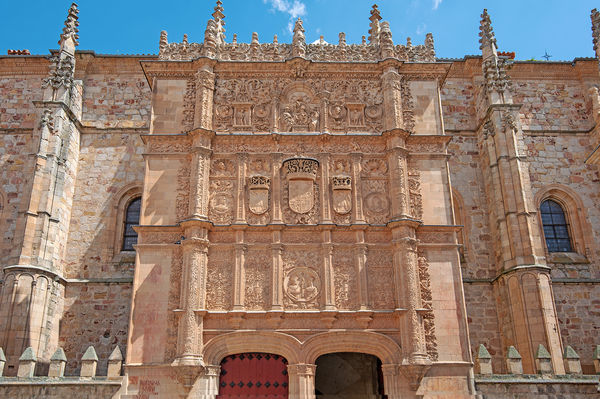Visiting Europe’s Top University Sights
By Rick Steves

When touring any city, it's fun to drop in on the local university. But in Europe, universities can be essential sightseeing, as some are home to great architectural, artistic, and cultural treasures.
In medieval Europe, higher education was the domain of the Church and was limited to ecclesiastical schools. Scholars lived in a community of monastic-type residential "halls," with lecture halls and often elaborate chapels in easy reach. This is especially true in Great Britain, still deservedly known for its prestigious universities. While several are worth touring, from a sightseeing point of view, I most enjoy Cambridge, near London. Two of Cambridge's highlights are the King's College Chapel and Wren Library.
The 500-year-old King's College Chapel is the best surviving example of English late Gothic architecture. It boasts the largest single span of vaulted roof anywhere — 2,000 tons of glorious fan vaulting — and the most complete collection of original 16th-century Renaissance stained glass in existence.
The Wren Library, at Cambridge's Trinity College, features the light and airy design of Sir Christopher Wren, the architect most famous for designing St. Paul's Cathedral in London. Unlike other libraries at Cambridge, this one is on an upper floor, allowing it to be flooded with light. Its 12 display cases contain a rotating collection of items, such as early editions of Shakespeare plays, handwritten works by John Milton, Sir Isaac Newton's notebook and prism, and A. A. Milne's original Winnie the Pooh.
Another treasured library is the elegant King João's Library (Biblioteca Joanina), at the University of Coimbra, in central Portugal. This 300-year-old temple of thought showcases 40,000 books in impressive Baroque splendor. The interior is all wood, including reading tables inlaid with exotic South American woods, bookshelves built with clever hideaway staircases, and even the "marble" triumphal archways that divide the library into rooms. Like its cleverly painted wooden archways, the library's painted ceiling is a successful work of trompe l'oeil illusion.
Since the library's books all date back to 1755 or earlier, a major job here is preservation, and the zealous doorkeeper opens the big front door sparingly to keep out humidity. The library is accessible only during appointed times, and visitors have just 10 minutes to view it before the doors are opened just long enough to let them sneak quickly out. At night, resident bats come out to devour book-eating insects, providing a chemical-free way of protecting the collection.
One of Europe's oldest university sights is the Book of Kells, tucked away in the library of the venerable Trinity College in Dublin. This famous illuminated manuscript is a 1,200-year-old version of the four gospels, elaborately inked and meticulously illustrated by faithful monks, who went to great lengths in creating the 680-page book.
To make the vellum pages, they laboriously scraped and dried the skin of an estimated 185 calves. To get the most vivid pigments, they used powders from crushed bugs and precious stones. They wrote in Latin calligraphy and adorned the pages with big, flowery letters, detailed illustrations, and animals crouching between sentences or intertwined with letters — a jungle of intricate designs, inhabited by tiny creatures both real and fanciful. (As this is a popular sight with long lines, it's best to buy timed-entry tickets in advance.)
In Salamanca, home to Spain's oldest university (established around 1218), the highlight is the grand facade of the school's entrance. Its intricate stonework is a great example of Spain's Plateresque style, represented by delicate, detail-packed, filigree-like carvings, with themes that make subtle statements about intellectual independence from the medieval Church.
Dominating the square opposite the facade is a statue of Friar Luis de León, an academic who was jailed and tortured for five years for translating part of the Bible into Castilian Spanish — which challenged the Church's control of the word of God. Upon being released, De León started his first post-imprisonment lecture with, "As we were saying…" Salamantinos still admire the courageous intellectuals who've maintained the independence of academia in the face of questionable political mores.
One of Europe's first, greatest, and most progressive universities, founded around the same time as Salamanca's, is in Padua, Italy. Famously independent of Catholic constraints, this haven for free thought ushered in intellectuals from all over the continent, including Copernicus, who studied here, and Galileo, who taught here.
Students lead tours of the university's grounds, where the highlight is a peek at Europe's first great anatomy theater (from 1595). Because of the Church's strict ban on autopsies, the university operated on a "don't ask, don't tell" basis. More than 300 students would pack this theater to watch professors dissect human cadavers — mostly bodies of criminals from another town.
From ancient autopsy rooms to glimmering Gothic chapels, from painstakingly detailed medieval manuscripts to gilded Baroque libraries, Europe's universities offer up some of the most impressive artifacts of the West's intellectual history.

